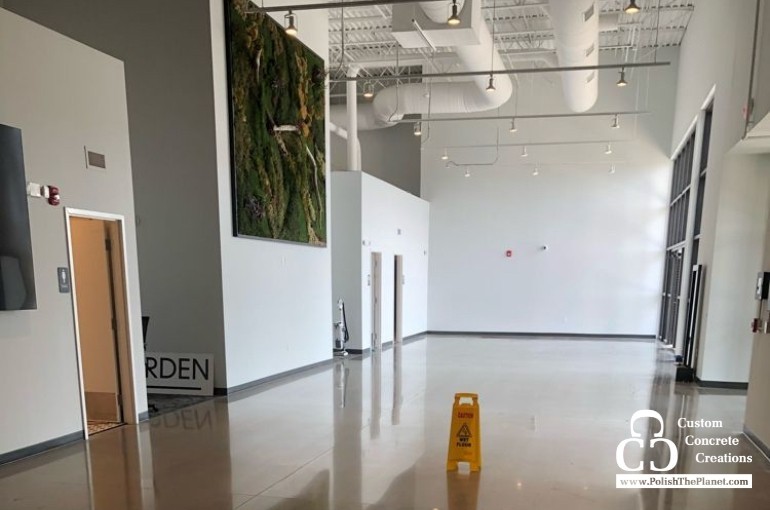
When it comes to designing art galleries and museums, every element, from lighting to flooring, plays a crucial role in enhancing the overall experience for visitors. One flooring option that has gained popularity in such settings is polished concrete. Not only does it offer an exquisite aesthetic appeal, but it also brings practical advantages that make decorative concrete finishing an excellent choice!
Aesthetics
Polished concrete floors in art galleries and museums provide a sleek and contemporary backdrop that complements various art forms and historical artifacts. Here's why they are a favorite among curators and designers.
Clean and minimalistic
Polished concrete's smooth, reflective surface creates a minimalist and timeless look that doesn't distract from the artwork. It allows the exhibits to take center stage.
Design possibilities
Polished concrete can be customized to achieve different levels of sheen and color. This versatility enables designers to adapt the flooring to the specific aesthetic of each gallery or museum.
Natural light enhancement
The reflective properties of polished concrete can enhance the play of natural light within the space. This not only saves on energy costs but also provides optimal lighting conditions for viewing art.
Practical advantages
Durability and longevity
Art galleries and museums receive heavy foot traffic. Polished concrete, known for its durability, can withstand this wear and tear while maintaining its beauty over time.
Easy maintenance
Polished concrete is low-maintenance, requiring only regular sweeping and occasional mopping. This frees up time and resources for museum staff to focus on the preservation and curation of artworks.
Stain resistance
Accidents can happen, and artworks may spill or leak. Polished concrete's resistance to stains ensures that, even in the event of mishaps, the floor can be cleaned without leaving permanent marks.
Moisture resistance
Galleries and museums often have strict humidity control to protect artwork. Polished concrete's natural resistance to moisture helps maintain stable indoor conditions.
Cost effectiveness
While the initial installation cost may vary depending on customization, the long-term cost effectiveness of polished concrete is a significant benefit for budget-conscious galleries and museums.
Real-world examples
Several renowned art institutions worldwide have embraced polished concrete.
The Broad Museum, Los Angeles
The museum's distinctive honeycomb-like exterior is complemented by polished concrete floors inside. The flooring's neutrality allows the artwork to shine.
Louvre Abu Dhabi, UAE
The museum's polished concrete floors enhance the interplay of natural light, creating a serene atmosphere for visitors to enjoy artworks from around the world.
Tate Modern, London
In the Tate Modern's Switch House extension, polished concrete floors flow seamlessly from the exterior plaza to the interior galleries, maintaining a cohesive aesthetic.
See how decorative concrete finishing can enhance your space
As more institutions recognize the benefits of decorative concrete finishing, it's likely to remain a favored choice in the world of art and culture. If you’re interested in installing polished concrete floors in your space, contact us today to discuss!
